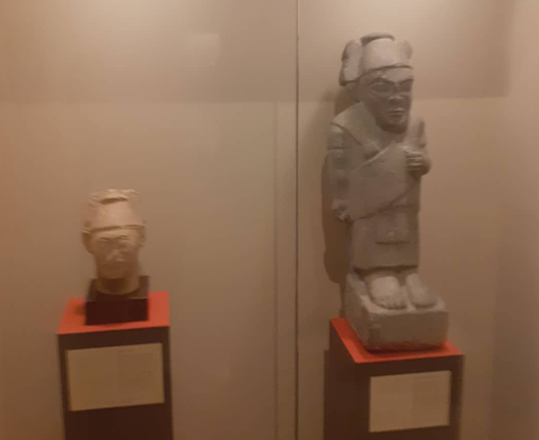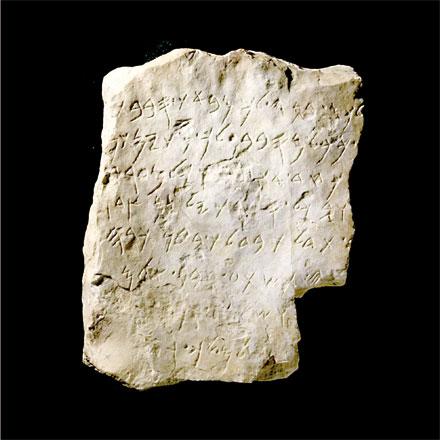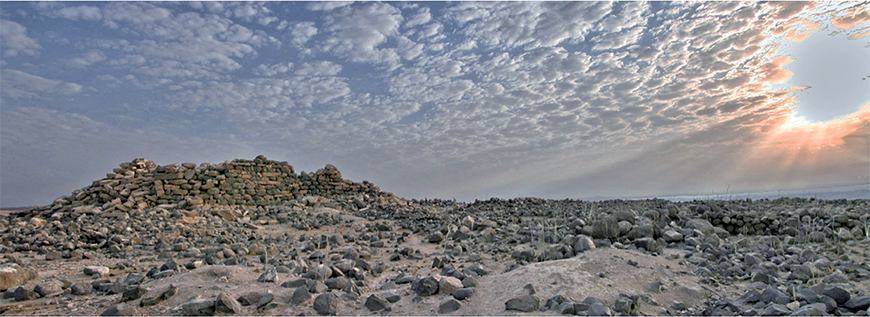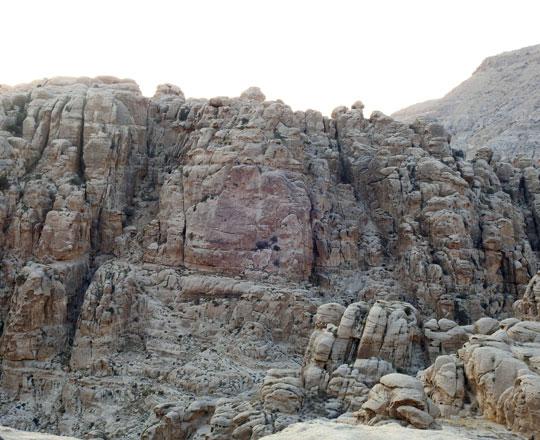You are here
Secrets of Amman Citadel: Discovering Ammonite temple of Milkom
By Saeb Rawashdeh - Jun 26,2024 - Last updated at Jun 26,2024

The Ammonite sculptures displayed at The Jordan Museum in Amman (Photo by Saeb Rawashdeh)
AMMAN — The Amman Citadel and its surrounding area was a focal point of Rabbath-Ammon, the ancient capital of the Ammonite Kingdom. Located northeast from the Dead Sea all the way to Syria, the Ammonite state was multiple times mentioned in Biblical sources. On the hilltop, archaeologists excavated a structure that could be an Ammonite palace or a large residential building, while in the 1960’s, another group of scholars discovered a building or a temple inscription that mentions the Ammonite god Milkom.
Milkom is attested several times in the Bible and is related to the Canaanite god El, or Moloch.
The inscription refers to different parts of the structure but also mentions a curse, but due to the lack of sources, scholars are not sure what was the purpose of the building and to whom it was dedicated.
The inscription says: “Milkom, he has built for you the precinct entrances that all who threaten you shall surely die. I shall surely obliterate, and all who enter and amidst all its columns the just will lodge… there will hang from its doors an ornament... will be offered within its portico...”
The Iron Age (1, 200BC-332BC) saw the transition from a smaller city-state into bigger kingdoms and statelets that were vassals of either Egypt or Mesopotamian empires. The trade route between Hijaz and the Mediterranean also flourished in that period. Gold, incense and spices were favourite commodities of the trade that would last for hundreds of years.
The Ammonite state thrived between 1000BC and 500BC, and its culture and religion were similar to customs of their neighbours. It was characterised by public and private cultic areas, noted Craig Tyson from D’Youville University in Buffalo.
“While Ammonite religion shares much with the surrounding cultures, there are also unique features like the moongod at Rujm Kursi, which most likely reflects a local tradition of lunar worship influenced by the iconography of the Mesopotamian moongod Sin,” Tyson said.
Because of different interpretation of religion, the scholar thinks the broad collection of human behaviours and ides are evolutionary models of religion. Here we have a combination of ideas about ghosts of ancestors, withes and other non-physical agents. Artefacts related to religion of Ammonites are artefacts, amulets and statues.
Regarding the above mentioned inscription, Tyson maintains, ”This is significant for two reasons. First, because monumental inscriptions are regularly associated with kings in the Iron Age Levant, and the deities mentioned on them are understood to support the king in his activities — especially military and building activities. Second, because later texts from the Bible identify Milkom as ‘the god of the Ammonites’.”
Milkom also appears as part of personal names on two Ammonite inscriptions. As with names in other Semitic languages, Ammonite names are often constructed from a deity name and a predicate (e.g., Abdallah, “Servant of Allah”), Tyson explaining adding that the first is a seal found at Tell Umayri, a site southwest of Amman.
“Dated to about 600BC, the seal reads, ‘[Belonging] to Milkomor, servant of Baalyasu’. Milkomor, whose name means ‘Milkom is light’ was apparently part of the court of King Baalyasu, who is regularly identified with the Ammonite King Baalis mentioned in the biblical book of Jeremiah 40:14. The second name, Milkomyat, appears in a list of names of unknown purpose on an ostracon from Tall Al Mazar, and is dated to the 5th century BC,” Tyson elaborated, adding that the name, Milkomyat, means something like, “May Milkom come”, Tyson explained, noting that the use of Milkom in personal names at the end of the Iron Age II illustrates the ongoing place of Milkom amongst the Ammonites.
Related Articles
AMMAN — The Ammonites were a Semitic ethnic group that controlled Amman and its surrounding areas during the Iron Age.
AMMAN — An inscription in Sela, south of Jordan, has gripped the attention of scholars, according to a Spanish historian.Hanging from a clif














